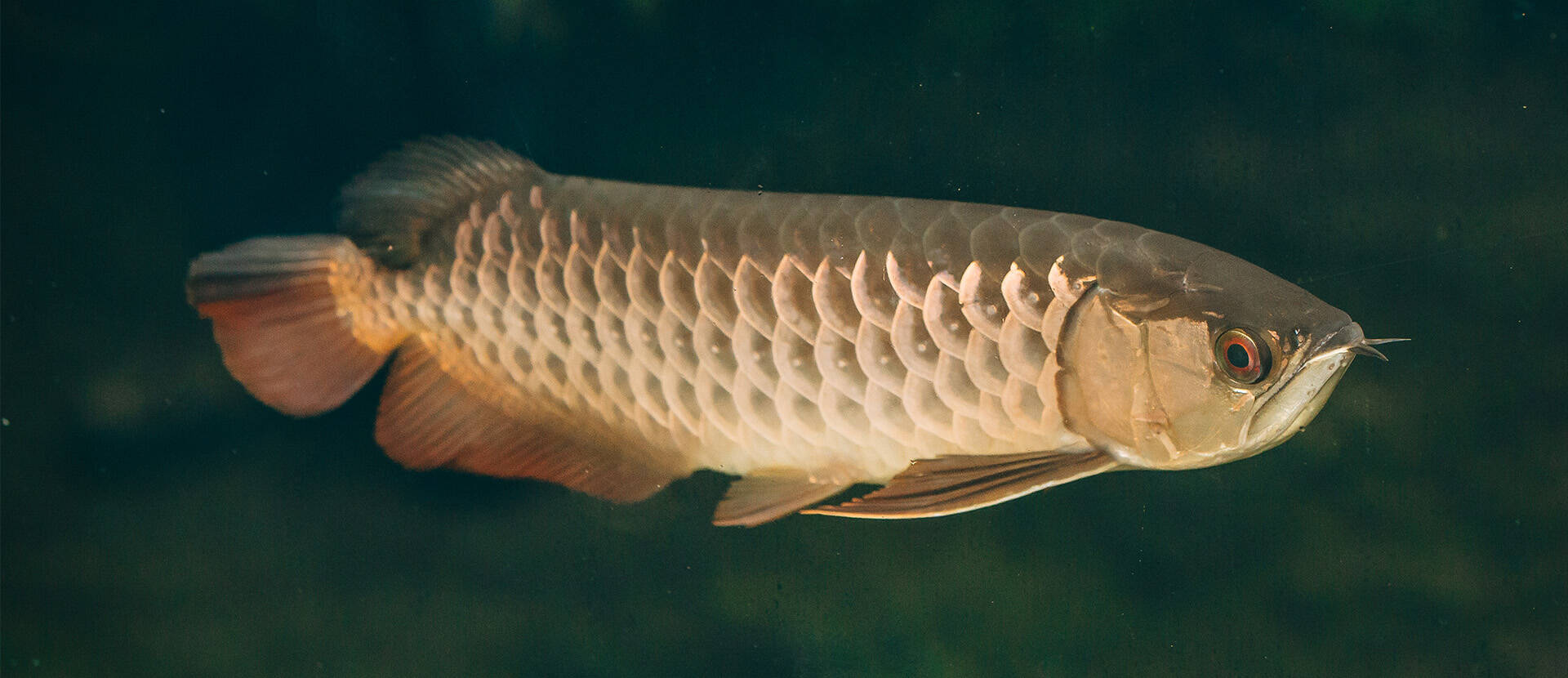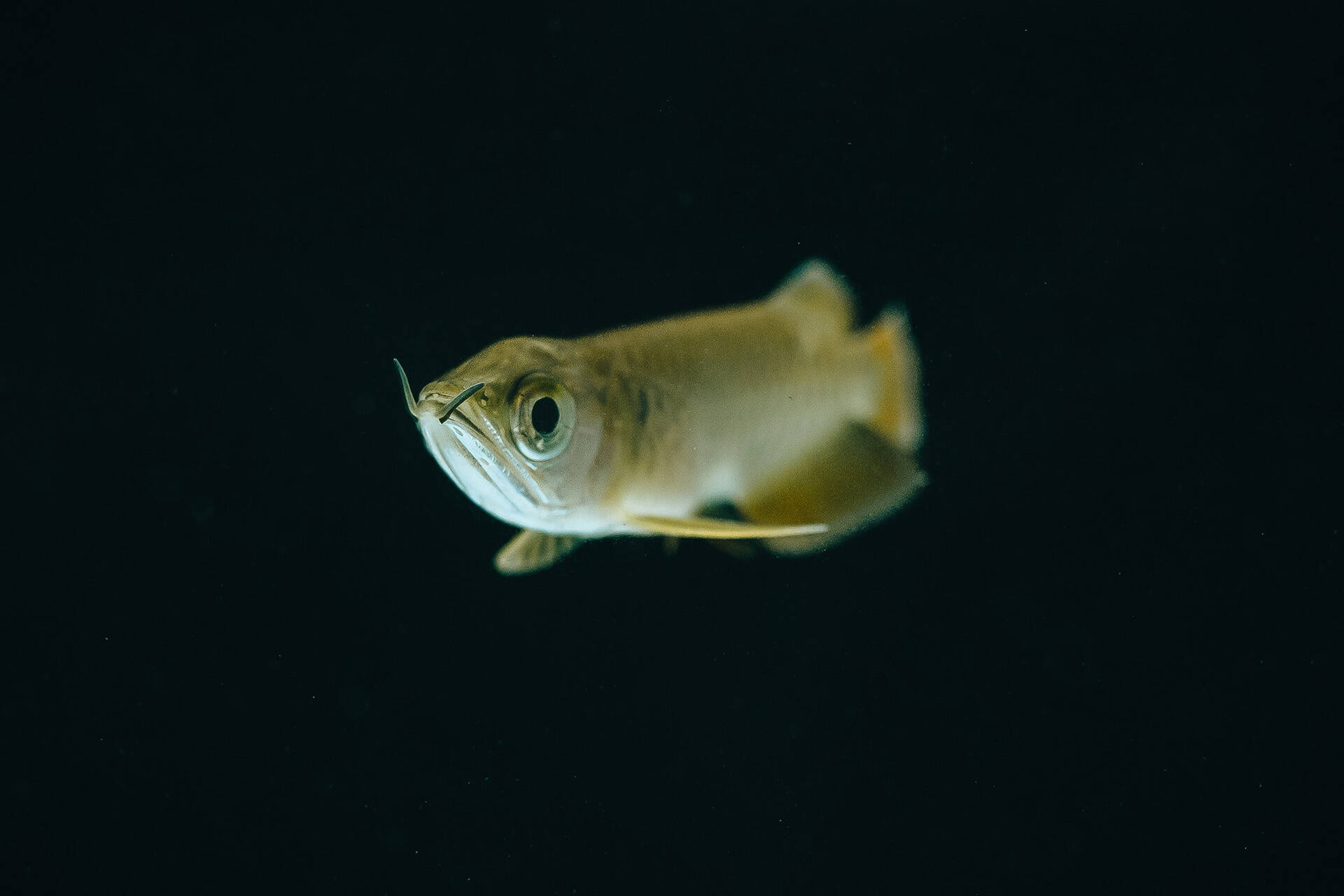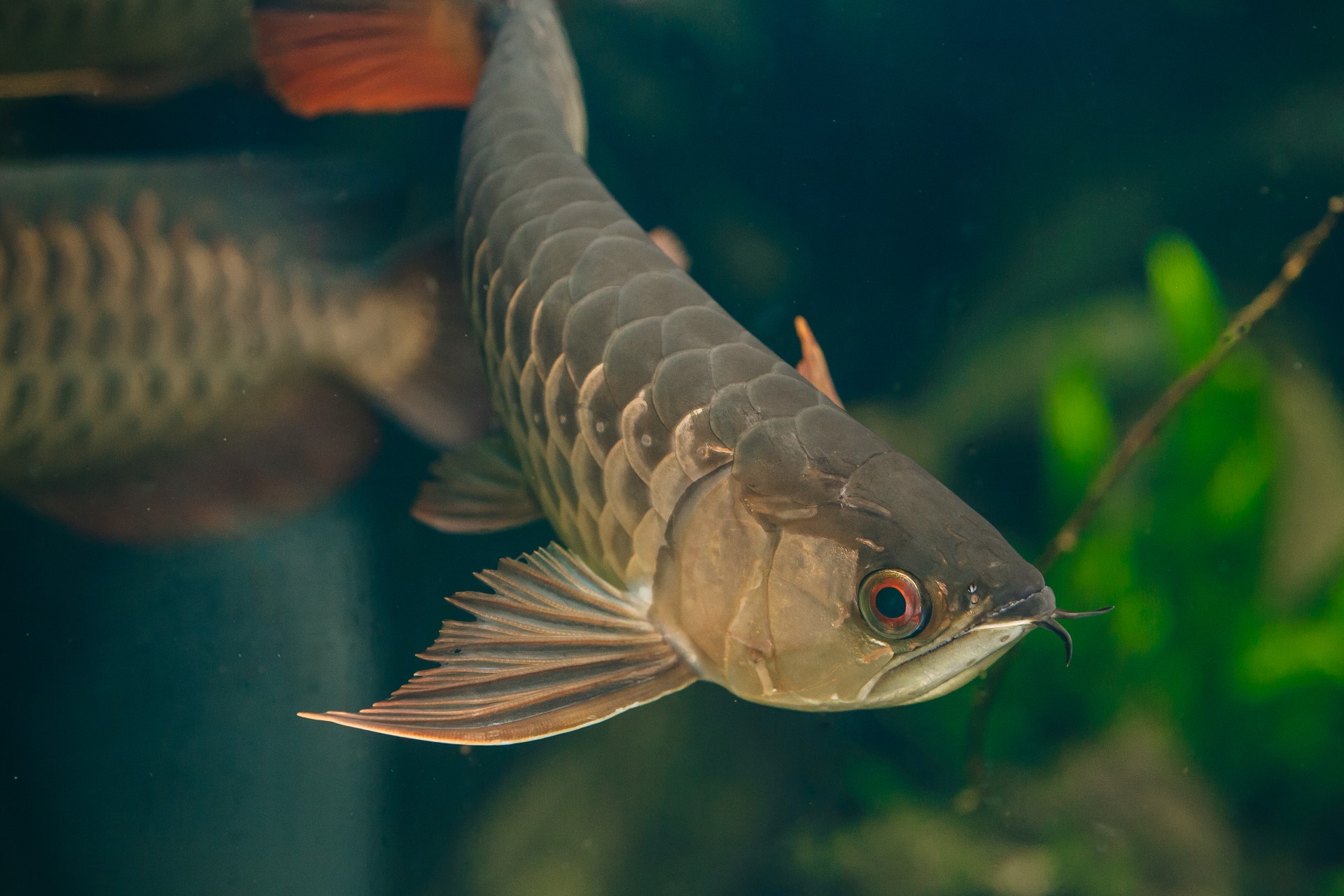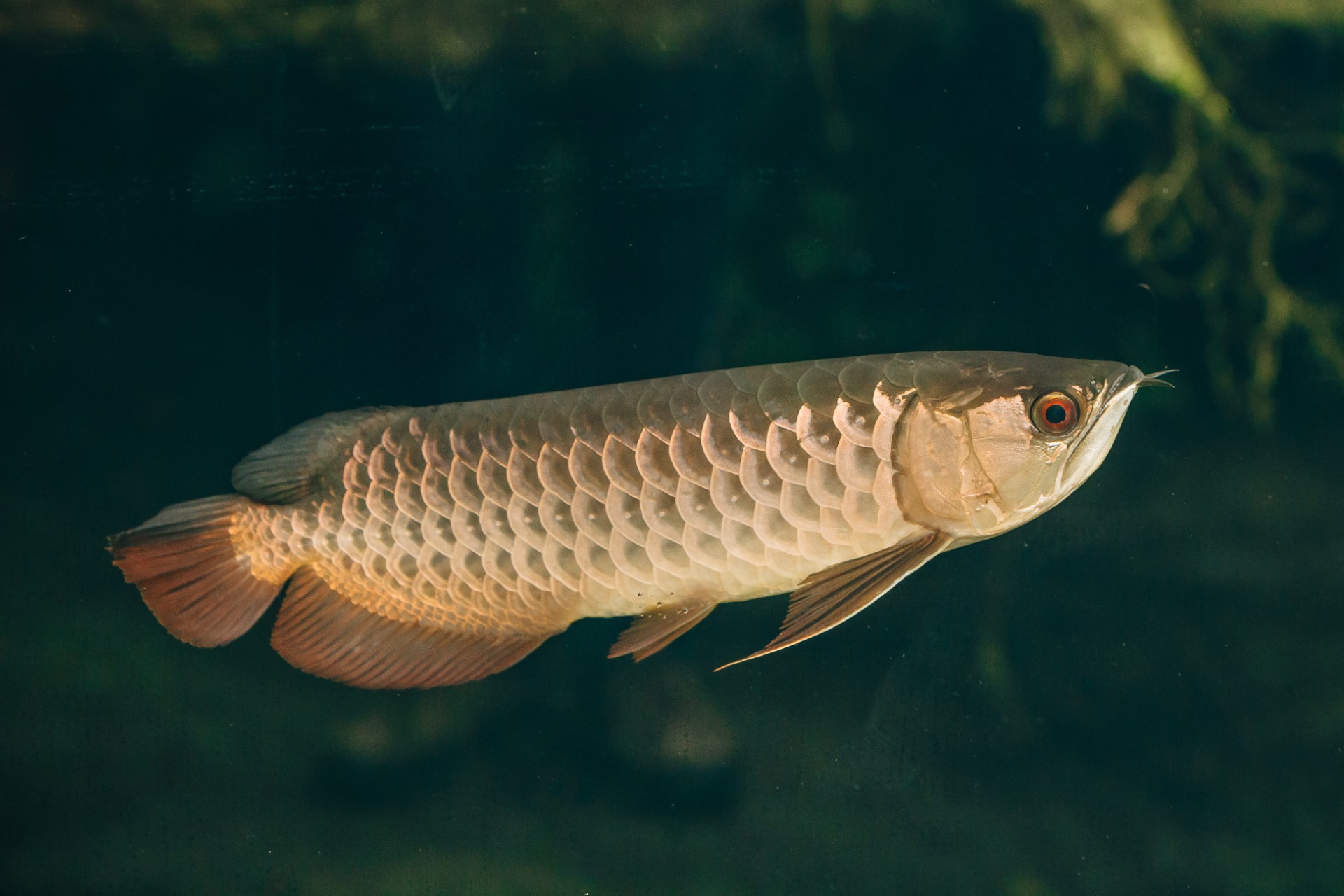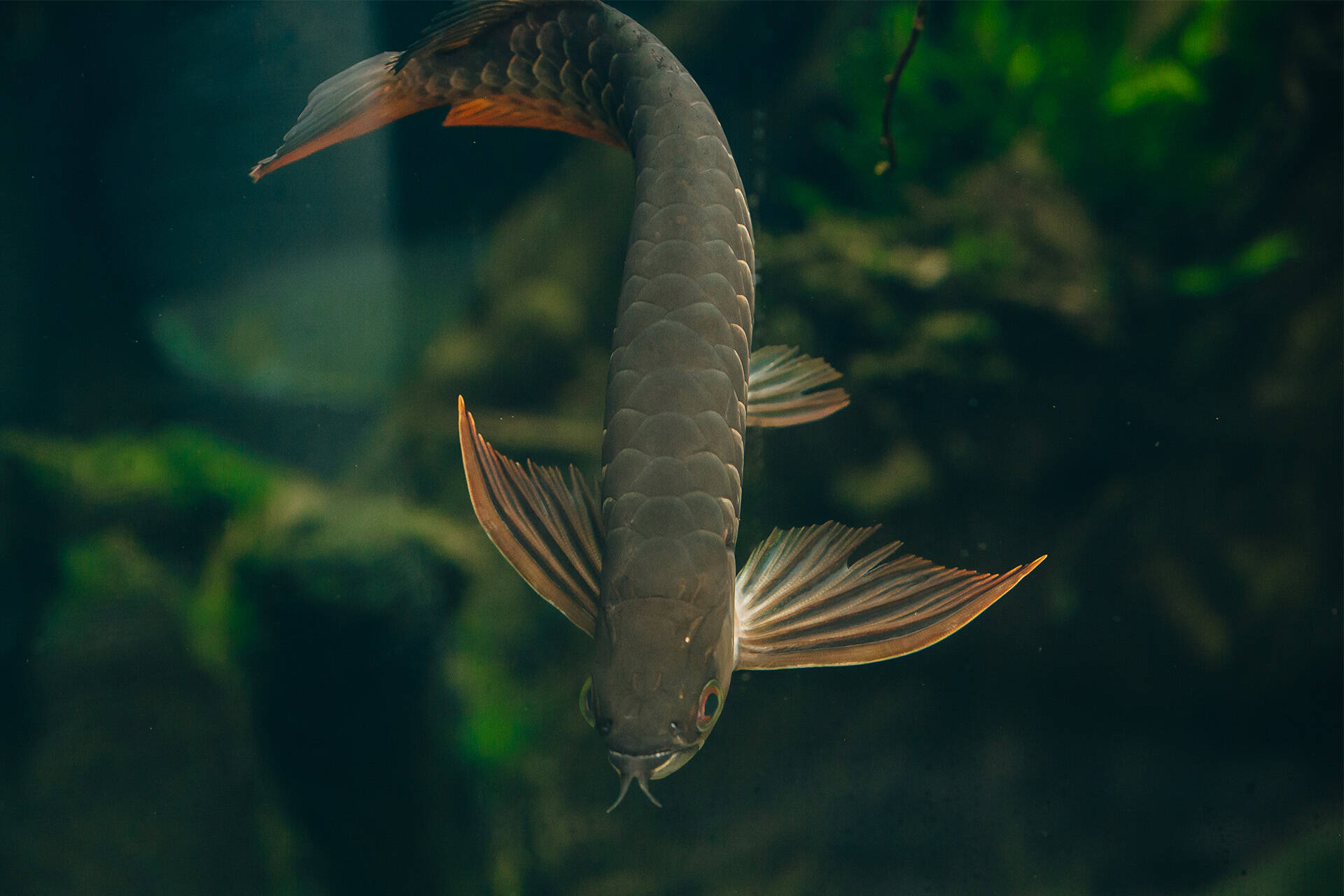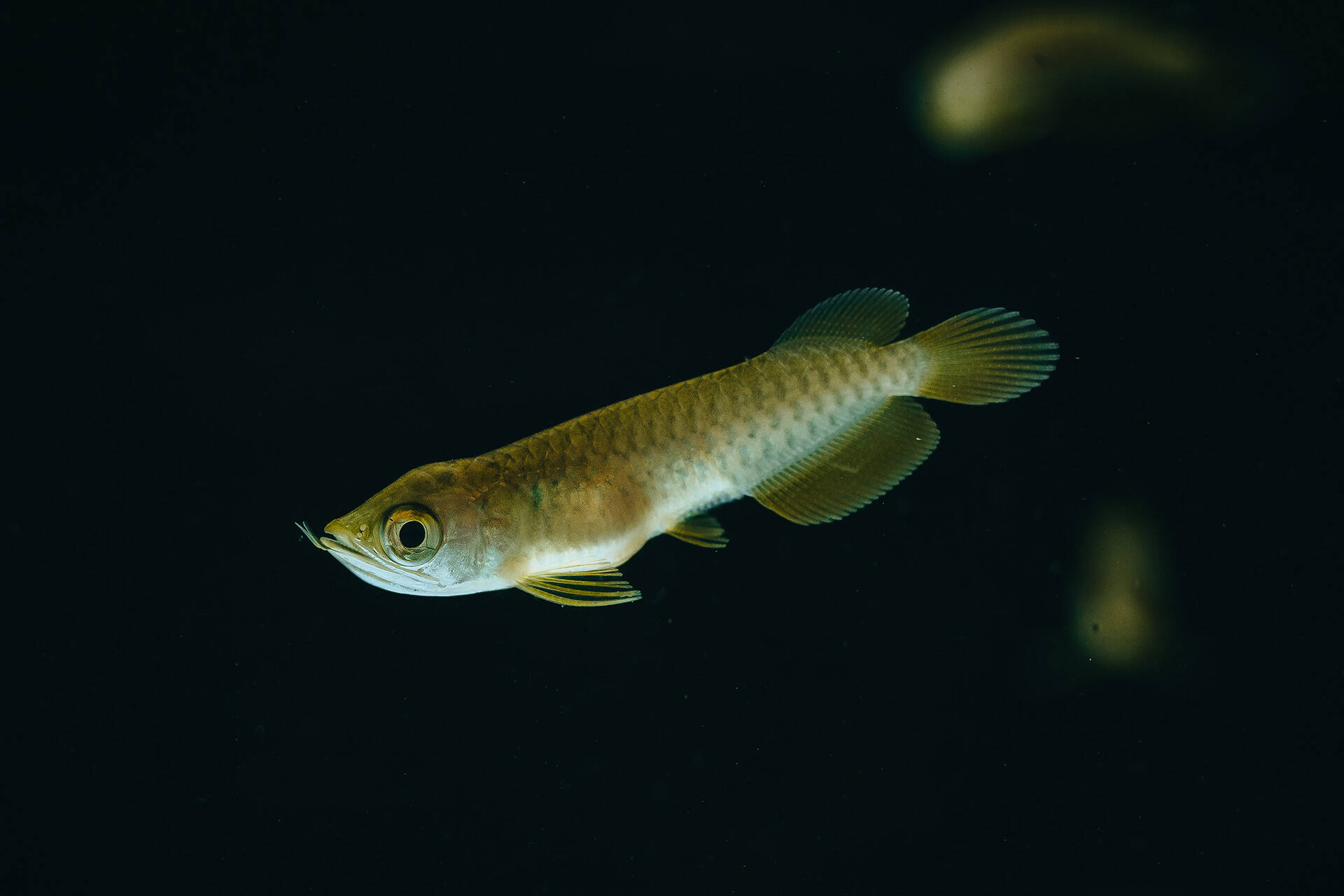Leaping above the rest
The Asian arowana is a freshwater carnivorous fish native to Southeast Asia, and these apex fish predators are known for their spectacular jumping ability.
This carnivorous hunter of lowland swamps and rivers dines mostly on smaller fish and invertebrates but occasionally amphibians and even small birds and reptiles.
Asian arowana courtship behaviours involve the male and female circling one another and engaging in gentle body-rubbing. Once the female deposits her eggs on the habitat floor, the male fertilises them before scooping them up in his mouth and keeps them safe there through incubation, hatching and even for 1-2 months afterwards while they are tiny vulnerable fry – and never eats a single one!


